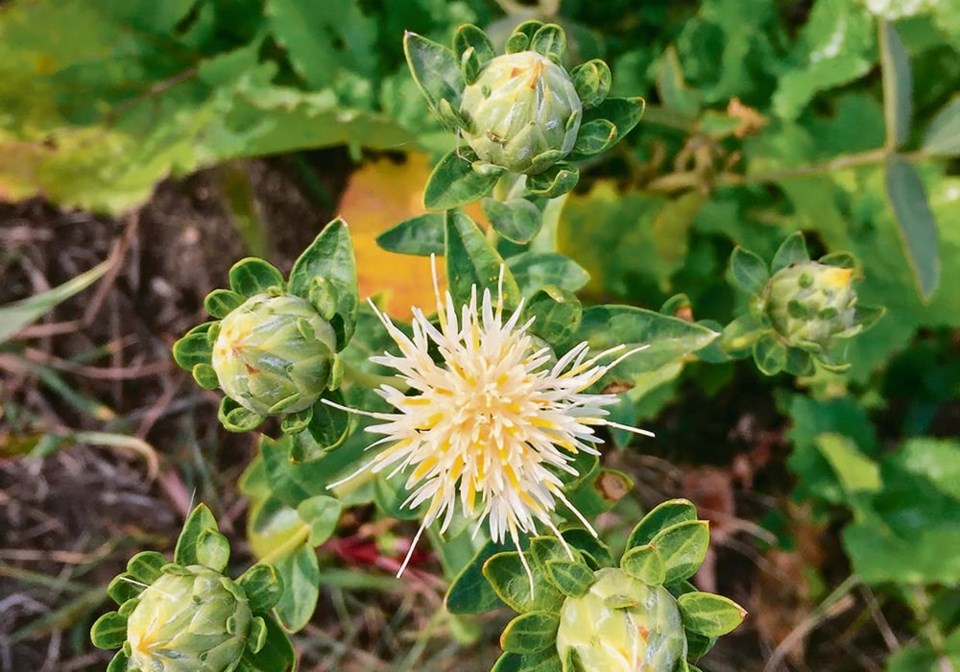WESTERN PRODUCER — Small, sunny yellow flowers on a thistle-like plant, safflowers have a long history of being used as an oilseed.
The crop has gone through many peaks and dips in popularity through the years, but its latest reincarnation is related to the increased interest in cover crops.
As more farmers deal with rising input costs and learn to work with fewer chemicals, cover cropping is gaining attention as a viable alternative for weed control, better soil health and overall biodiversity.
“The quickest way to justify growing cover crops is to include animals,” said Kevin Elmy of Cover Crops Canada.
This is where safflowers can come into play. In a mixed cover crop, while green and flowering, most livestock will eat around the safflower. However, once the plant has been terminated by frost, it becomes a desirable forage plant.
Currently, there is a shortage of safflower seed because its declining popularity has led to less seed being propagated.
“We cleaned out the pipeline,” said Elmy.
The long-term benefit of cover crops is realized as soil health is built up. Having living root systems in the ground helps redistribute nutrients, activates the microscopic organisms that live there and encourages the growth of micro-fungi that grow on living root. Growing something green on farmers’ fields as early and as late into the season as possible is the goal of cover cropping.
One of the long-term advantages of cover cropping is that a farmer with livestock can grow their own silage. Mixed cover crops can be mowed, not just used as forage.
Elmy said the mixes can include “…wheat, barley, oats, triticale, durum. We could throw canaryseed in there. Then when we start talking legumes; we have our peas, lentils, chickpeas, soybeans, brassicas, mustard and our forbs.”
The crops can be harvested a few times in a growing season, or rotationally grazed by livestock. With the cattle feed shortage of the past few years, growing silage on-farm can be attractive to some producers.
Long-term cover crops can be established with biennials like “… winter triticale, some chicory, some plantains, some sweet clover,” Elmy said.
Having written a book on the subject, Cover Cropping In Western Canada, Elmy has been spreading the word about the values of living root systems.
He said producers must first talk about goals and once they know what they want to achieve, they can start talking about species selection.
“What time of year is the cover crop needed? For winter grazing or early spring harvesting? As well as the soil conditions. What is needed to help with soil recovery, will all determine what the farmer will use.”
Safflower contributes many added benefits, Elmy said, including its deep taproots.
“This way it can fight through any hard pans down (in the soil). We’re capturing those nutrients that those other crops can’t get deeper in the soil profile. It is mycorrhizal fungi friendly. That’s going to give you a living root longer in the season, but it’s going to flower later. This way your pollinators are going to be fed later in the season and (safflower is) drought tolerant.”
Elmy said uptake of cover cropping is attracting more people to look at it.
“We’re on the cusp of change.”
However, he said some farmers may never consider it.
“The people that are deep into chemical farming, they don’t have the management skills … it does take a little time and a little bit of management.”




